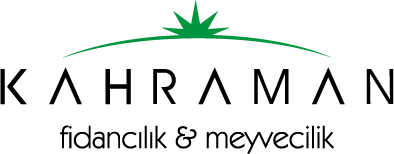PEACH AND NECTARINE ROOTSTOCKS
GF 677 (Peache Amnedier) ROOTSTOCK
– This rootstock, which is a hybrid of peach and almond, was developed at the INRA Research Institute in France.
– It is widely used especially in countries bordering the Mediterranean
– It is a strongly growing rootstock and can be planted at 5x4m or 5x3m planting distances as well as 5x2m planting in V or Y training systems.
– It is an ideal rootstock for peach and almonds in calcareous soils with limited irrigation conditions.
– While peach saplings cannot be planted immediately where a peach tree is uprooted, peach saplings can be planted on the GF 677 rootstock.
– It has good graft compatibility with all peach, nectarine and almond varieties and positively affects the variety on it in terms of yield.
– Propagation with wood and green cuttings is difficult and the most suitable propagation method is tissue culture.
– It does not like heavy, high groundwater and poorly aerated soils.
CADAMAN (Avimag) ROOTSTOCKS
– It was found in Hungary as a natural hybrid of P. Persica x P. davidiana species and was developed at the INRA Research Institute in France.
– It is a weaker growing rootstock compared to GF 677 and Barrier-1 rootstocks.
– It can also be used in soils that are poor in organic matter, weakly structured, calcareous and have high pH.
– It is resistant to root knot nematode.
– It is not recommended for heavy, high groundwater soils, but it is more resistant to groundwater than GF 677 rootstock.
– Peach can be planted again in the area where it was uprooted using this rootstock.
– It ensures that the variety on it bears fruit early and has a positive effect on fruit size and color.
– In recent years, its use has become widespread, especially in countries bordering the Mediterranean, especially in Spain.
BARRIER -1 (Enprean -1) ROOTSTOCK
– It is a rootstock developed in Venice, Italy.
– It is a hybrid of peach x wild Chinese peach.
– It grows with the same strength as GF 677.
– It is a rootstock suitable for replanting peaches in places where peaches are uprooted.
– It has a strong hold on the soil.
– It has a positive effect on the coloring of the fruits of the variety on it.
– It is resistant to root knot nematode.
– Although its resistance to heavy soils is better than GF 677 rootstock, it is not as tolerant as GN rootstocks.
GxN ROOTSTOCKS
– It was obtained by hybridizing P.Persica x P.Persica x P. Dulce species and 3 important GN rootstocks are commercially produced.
– The most important GN rootstocks are; GN 15 (Garnem); GN 22 (Felinem) and GN 9 rootstocks.
– Garnem rootstock is the most widely used GN rootstock.
– It is resistant to root knot nematode.
– It is a rootstock that grows strongly and has good soil attachment.
– It is used as a rootstock for peach, nectarine, plum and almond varieties.
